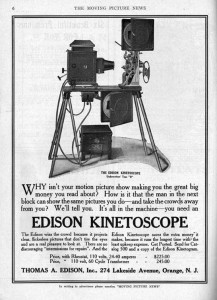I just posted the most recent piece in my series of columns, “Educational Technology Points of Inflection.” It explains where educational video is in its development life cycle.
Thomas Edison exclaimed as early as 1913 that “It is possible to teach every branch of human knowledge with the motion picture.” He also predicted that motion pictures would replace the textbook and that schools would change drastically. Despite the incredible advances in digital video of the past 25 years, which meet or exceed the exponential increases of Moore’s Law, Edison’s pronouncements remain unrealized. Furthermore, the time of exponential increases in basic capabilities might well be coming to an end, “the significant positive slope of the linear portion of the development curve suggests that significant, even amazing, advances likely lie ahead for video as an effective educational technology.”
You can read the entire piece here: “Educational Video on the S-Curve of Video Technology Development.”

